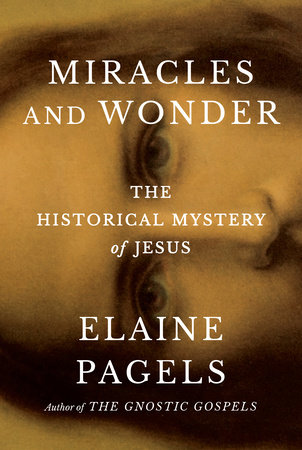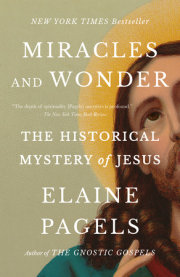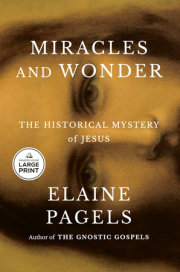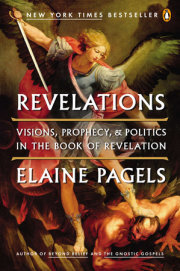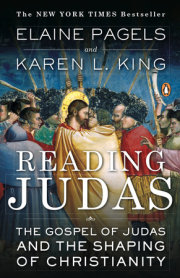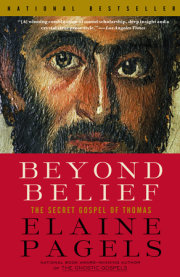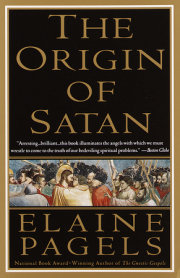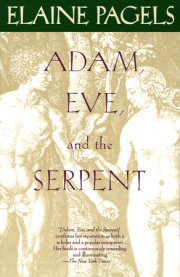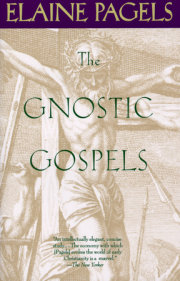1
The Virgin Birth: What Happened?
Jesus’s Family and the Circumstances of His Birth
Perhaps the most unusual feature of the gospel stories is the virgin birth: What might it mean? How do the gospel writers say that it happened, and why? When I first started to ask these questions, I found many surprises. I’d always assumed that there was only one birth story, having seen different versions merged into one on Christmas Eve in our small Methodist church in California, when we acted out the children’s pageant, dressed as angels crowned with sparkling halos, or shepherds or kings with paper crowns, arriving to greet the baby Jesus, a doll cradled by the girl who’d scored the role of Mary. But when I went back to investigate the birth story, I was amazed to see that, although the New Testament gospels of Matthew and Luke agree that Jesus was a royal prince, born in Bethlehem, and that heavenly signs announced his birth, at nearly every other point each tells a very different story.
I was also surprised to see that the earliest written narrative of Jesus’s life in the Bible, the Gospel of Mark, tells us nothing about the circumstances of his birth, and nearly nothing about his family background. The same is true of the last of the four New Testament gospels, the Gospel of John, but the other two, the Gospel of Luke and the Gospel of Matthew, tell us a great deal, each offering many details.
Both Luke and Matthew start by telling of Jesus’s family and lineage, and relating the circumstances of his birth and youth. Each offers a genealogy that traces Jesus’s paternal descent from his father, Joseph, to Israel’s royal dynasty, back to King David, circa 1000 b.c.e. As we’ve noted, both locate Jesus’s birth in Bethlehem, the city native to Israel’s kings. Both also claim that Jesus’s parents received divine visions about their future child and his destiny—heavenly signs, astrological portents that signified the arrival of a divinely appointed “Son of God.” Most amazing of all, both Matthew and Luke insist that Jesus’s birth involved a miracle unprecedented in the history of the world—a “virgin birth.”
To understand what each writer has in mind, we need to read these stories separately. Matthew begins by announcing that Jesus is God’s chosen Messiah, setting forth a genealogy that shows his descent from Israel’s greatest kings, David and Solomon. Then he tells how magi, astrologers from foreign lands, alerted by the appearance of a new star signaling the birth of a future king, travel to Jerusalem bearing royal gifts to honor the newborn prince. But news of the birth of a potential rival terrifies the reigning king, Herod the Great. After convening his entire court, he summons the foreign ambassadors, ordering them to find the child and return to tell Herod how to locate him.
Although a familiar story in Luke’s gospel pictures Jesus’s parents traveling to Bethlehem, seeking an inn, and finding none, Matthew, surprisingly, says that his parents had a house in Bethlehem, ancestral city of the Davidic dynasty. Then, he says, the heavenly sign, the Christmas star, led the magi to their home (Matthew 2:10). Overwhelmed with joy, they enter the house and, seeing the child with Mary, his mother, kneel down to pay homage, opening their treasure chests to offer gold, frankincense, and myrrh. But after they secretly depart from Jerusalem, eluding Herod, the enraged king orders his soldiers to slaughter all male Jewish babies under the age of two—a fate Jesus escapes only because his father, Joseph, immediately takes his family into hiding in Egypt. Only later, after hearing of Herod’s death, does Joseph dare return with his wife and child. But, fearing that Herod’s son and successor also might threaten the child’s life, Joseph moves the holy family from their home in Bethlehem to a rural town in Galilee, where they live incognito until Jesus grows up. As Matthew tells it, this explains why, instead of being recognized as a prince, he is known simply as Jesus of Nazareth (2:22–23).
Luke, too, says a lot about Jesus’s family and birth; but, as we’ve noted, he tells quite a different story. Instead of a royal birth heralded by a divine sign recognized by kings and rulers throughout the world, Luke mentions no star, and no public alarm. Instead, he pictures a pregnant young woman from a rural family, who went into labor while traveling away from home. Having nowhere else to stay in Bethlehem, she and her husband took shelter in a barn, and Jesus’s mother had to give birth in a manger; only local herdsmen took note of what happened. But since Luke, like Matthew, insists that Jesus’s father was related to Israel’s royal dynasty, he says that Mary and Joseph had traveled to Bethlehem, claiming that members of that family were required to pay Roman taxes there.
As Luke tells it, Mary, astonished when the angel Gabriel appears to her to say that she is about to become pregnant, exclaims, “How can this be, since I am a virgin?” Reading Luke’s account as an adult raised questions that hadn’t occurred to me before. Many Christians love and revere Mary, not only as “Mother of God” but also as someone whose loving-kindness and purity Christian women might seek to emulate. But now, rereading Luke’s story, I had to consider other possibilities. What if we suspend, for a moment, the happy fiction Luke presents, and consider how a young woman receiving such a message might actually respond? Isn’t it likely that a girl with no sexual experience might be startled and dismayed to hear that she is about to become pregnant, given the potential embarrassment and shame she might suffer? Luke is a writer who, unlike Matthew, focuses on Mary, and wants us to imagine her surprised and delighted. Yet the dialogue he puts in her mouth suggests that she is overwhelmed and simply acquiesces, declaring, “I am the Lord’s slave; so be it” (Luke 1:38). Luke’s choice of words, the Greek doulē, “slave,” is often translated into softer terms, like “servant” or the English word “handmaiden.” But those hearing this story in Luke’s time would likely know that an enslaved woman was required to obey a master’s will, even when that meant bearing his child, as it often did. Luke intends to show, however, that the Lord himself could turn a burden into a blessing, even for Mary.
For over two thousand years, Christians throughout the world have merged the two stories into one, to create a composite version that ignores their discrepancies. For, although both birth stories agree on three points—Jesus’s lineage, the location in Bethlehem, a miraculous birth—there the similarities end and difficulties begin. And although historians have sought for millennia to verify details of these stories, they have found none—none for Matthew’s claim of an unusual astronomical sign; none for any historical record that hints at a massive slaughter of Jewish babies; and none to validate Luke’s claim that Jesus’s family would have had to pay Roman taxes in Bethlehem. So, when the Roman Catholic scholar Raymond Brown considers the “star” Matthew mentions, he notes that, though ancient Babylonian astrologers “might have associated a particular star with the King of the Jews,” there are no records of such an event, or even of such a prediction. Brown does suggest that many of Matthew’s contemporaries might have accepted his account, since Roman biographers often associated the sighting of special astronomical signs with the births of great rulers. For example, a silver coin honoring Julius Caesar (c. 40 b.c.e.) portrays him with a special star that signals his divine destiny.
In the seventeenth century, European scientists began to sift through evidence of unusual celestial events, seeking scientific evidence for the “star.” The astronomer Johannes Kepler suggested that it must have been a supernova, although there is no record of one from that time. Others have suggested that the star may have been a comet, perhaps Halley’s Comet, which appeared in 12 b.c.e. Later, however, when Kepler sighted a conjunction of Jupiter and Saturn, he noted that the same conjunction, predicted to occur every 805 years, may have happened in 7 b.c.e., when it appeared in the constellation Pisces, and so may have been the Christmas star—a view that some endorse to this day.
Yet, since such speculation is far from conclusive, literary scholars suggest instead that, rather than speaking of astronomical “facts,” Matthew assimilated into his narrative the poetic language of such prophets as Isaiah. Writing six hundred years before Jesus’s birth, Isaiah envisioned that when the “day of the Lord” dawned, Gentiles would travel to the holy land of Israel, bearing “the wealth of the nations,” along with camels and flocks of sheep, bringing offerings of “gold and frankincense” to honor the dawning of the “great light” of God’s glory (Isaiah 60:1–7) . If that is what prompts Matthew to write the “Christmas star” into his birth narrative, his likely intention is not to deceive his audience into believing something that didn’t happen. Instead, convinced that Jesus was, indeed, God’s promised Messiah, Matthew may have assumed that events coinciding with his birth would have fulfilled ancient prophecies. And since Matthew intended not only to write a narrative of Jesus’s life but above all to show the meaning of his birth and his life, he may well have adopted Isaiah’s metaphor, picturing Jesus’s birth as the light of a new dawn.
What about Matthew’s claim that King Herod ordered his soldiers to slaughter Jewish babies? As noted, historians of the early Roman Empire have searched in vain for any hint of such a government-ordered massacre. Yet Herod was famous for his cruelty, which may have made such a story sound plausible. When he suspected two of his sons, Alexander and Aristobulus, of plotting against him, Herod ordered his executioners to kill them both; he had previously executed their mother, Mariamne, his favorite wife, under similar charges. After that, a popular saying mocked his professed refusal to eat nonkosher food: “Better to be Herod’s pig than his son!” Nevertheless, nearly all historians agree that the unprecedented mass killing that Matthew claims to report could not have occurred without any trace remaining in Jewish or Roman historical records.
Instead, here again, as in the case of the “Christmas star,” many scholars agree that Matthew models his story of Jesus’s birth on literary precedent—on famous passages in the Hebrew Bible, to suggest, for example, that, just as the infant Moses escaped the Egyptian pharaoh’s mass slaughter of Jewish babies, so the infant Jesus barely escaped a similar massacre under King Herod (Matthew 2:8–18). As for the third event, which Luke reports—that Mary and Joseph had to travel to Bethlehem to register for taxes—historians of Rome note that, although Roman rulers did inflict severe taxes on Jews around the time of Jesus’s birth, they imposed no such travel requirement. So, here again, literary scholars join the discussion, suggesting that Luke includes this detail in order to move Jesus’s parents from their home in Nazareth to Bethlehem in time for his birth, to fulfill the Hebrew Bible prophecies of a Messiah’s birthplace.
Matthew’s and Luke’s birth narratives, then, likely contain more literary adaptation of Hebrew Bible stories than history. This similarity between their gospels shows that, although the New Testament writers often mention historical events, they were not writing primarily to report history, or even biography—not, at any rate, in ways that conform to Greek and Roman literary conventions. Instead, they were writing, some forty to seventy years after Jesus’s death, primarily to publicize his message. Simply put, Jesus’s devoted believers wrote these narratives to persuade others to “believe in the gospel”—the Greek term euangelion translates as “good news”—and join their new movement.
The gospels, then, have that motivation in common. But when we think of these writings as less than factual, written, in effect, as propaganda for the movement (intending that term as descriptive, not pejorative), we begin to question startling discrepancies between them. The earliest written sources that mention Jesus—the letters of Paul, and the New Testament gospels—all mention his mother. But apart from the two birth stories we’ve noted in Matthew and Luke, only John’s gospel briefly mentions Joseph as Jesus’s father. Neither Paul nor Mark ever mentions Joseph’s name, and neither mentions any human father. Noting this absence, Professor Raymond Brown has speculated that Joseph is not a historical figure. He suggests instead that Matthew may have patterned what he writes of Joseph’s receiving messages from angels in his dreams on the Hebrew Bible story of Joseph “the dreamer,” told in Genesis 37. But if Joseph was not Jesus’s father, who was? As we shall see, many respected scholars regard the birth stories primarily as legends woven from Biblical stories in order to deflect that embarrassing question.
The mystery begins with Jesus’s genealogy. We’ve noted that Matthew begins his account with one genealogy, and Luke adds another—which raises questions we need to investigate. Both claim to trace Jesus’s lineage back to King David, but when we compare them, we cannot help noting that these two accounts clash from the start. Immediately after mentioning Joseph as Jesus’s father, each names a different man as Jesus’s paternal grandfather; and after that, the two genealogies continue to diverge at nearly every turn (Matthew 1:1–18; Luke 3:23–38). Finally, whereas Matthew claims to trace Jesus’s lineage back to Abraham, Luke goes further, claiming to trace it back to Adam, ancestor of the human race, whom he calls “son of God”—a term he also applies to Jesus.
A confusing genealogy is one thing; the bigger question is, why do both writers insist on Jesus’s “virgin birth”? Matthew admits that Joseph himself found this claim so outrageous that when he discovered that his future bride was pregnant, and not with his child, he immediately decided to break the marriage contract (Matthew 1:18–19). At this point in Luke’s story, however, he mentions nothing of marital discord. On the contrary, Luke wants to interpret what happened as miraculous, an enormous blessing. As he tells it, a young girl who “has never known a man” suddenly, astonishingly, discovers that God has graced her with a unique role in human history. Bursting with joy, she begins to sing a song of praise to God.
Copyright © 2025 by Elaine Pagels. All rights reserved. No part of this excerpt may be reproduced or reprinted without permission in writing from the publisher.





